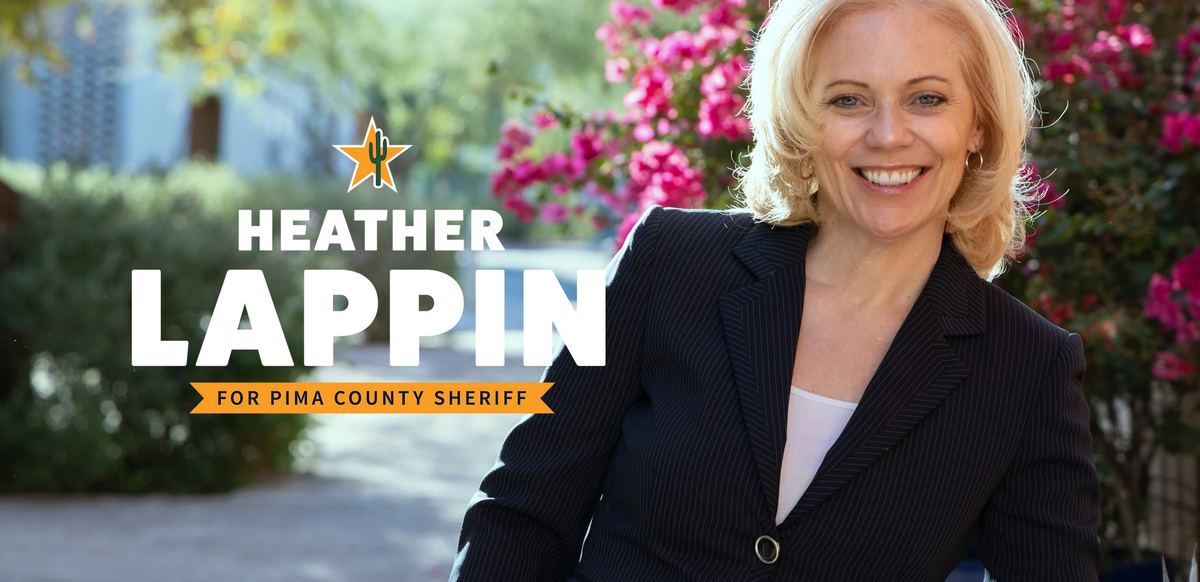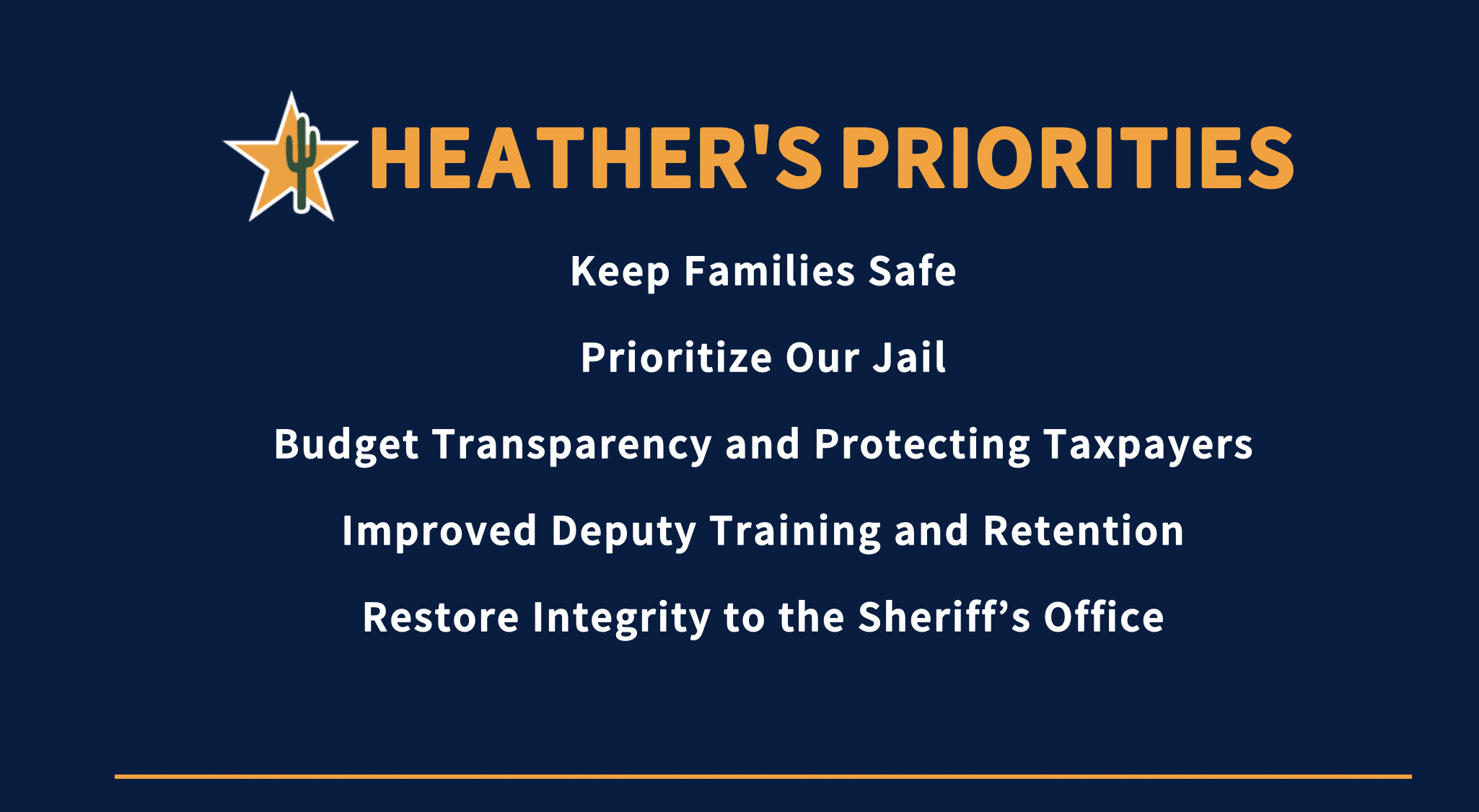Lappin weighs in on sheriff department’s role at the border
Sheriff Chris Nanos didn’t respond to our requests for an interview, but his Republican challenger, Heather Lappin was happy to clarify her views.

Every election cycle brings talk of immigration and the southern border. But this year, it’s an issue that’s actually on the ballot in Arizona.
Proposition 314 would, among other things, allow state and local government entities like the sheriff’s department to enforce federal law when it comes to arresting people they suspect of illegally crossing between ports of entry.
Pima County is also getting ready to elect a sheriff that could play a role in local border enforcement, so the Tucson Spotlight reached out to the two candidates to ask about their thoughts on the department’s role in immigration issues and how they would handle the new law, should it pass.
Sheriff Chris Nanos didn’t respond to our requests for an interview, but his Republican challenger, Heather Lappin was happy to clarify her views.
“If there’s a law … if 314 passes, I will absolutely enforce that law,” Lappin said.
She added that while she doesn’t believe deportation is the department’s responsibility, she would “absolutely” send people to a federal task force if requested to do so.
But with the department’s current level of staffing, enforcing border security might not be possible, Lappin said, citing a one-third decrease in patrol staffing since Nanos took office.
“We don’t have resources for that by any means,” she said. “But I do feel it's our responsibility to play a very large role in the crime coming in from illegal border activities, such as human trafficking and drugs.”
While border activity has decreased in recent months, Lappin says she’s seen firsthand the “consequences of the last three and a half years” at the border. During one of her visits to Cochise County to observe a unit that oversees over 1,500 cameras in the southern border area, she says she saw “military-age men coming across with weapons.”
“When we don’t vet who is coming across our border, we make our community less safe,” she said.
While Cochise County is very different from Pima County, Republicans nationwide have talked about the consequences of “open borders” throughout President Joe Biden’s term.
Lappin brought up Republican Rep. Juan Ciscomani’s claims that 45% of fentanyl comes across in areas other than ports of entry, a statement that is not backed by data.
“I’m not blaming all immigrants,” she said. “(But) I don’t think it is rhetoric, I think that is exactly how 50% of the fentanyl is coming across into the U.S., through the Tucson border sector, so that’s not rhetoric at all.”
The majority of fentanyl crossed into the U.S. is brought through ports of entry by U.S. citizens or residents, according to the National Immigration Forum, the Cato Institute and other organizations.
Tucson Spotlight shared this information with Lappin, who said, “I think we are confusing ‘caught’ with actual smuggling.”
In 2022, 89% of convicted fentanyl drug traffickers were U.S. citizens and 93% of fentanyl seizures occurred at legal ports of entry, according to a report from the Children’s Defense Fund.
“There's no more backpacking, period. All the drugs that you see caught are either already in the U.S. or they're coming across in vehicles,” said Juan Rocha, a criminal and immigration law attorney in Phoenix and a professor at Arizona State University. “You might see an occasional one that crosses through the desert, but (for the most part) they're all people with legal status. It's not the illegal immigrants.”
The Cato Institute said that the location of the smuggling at ports of entry “makes sense because hard drugs at ports of entry are at least 96% less likely to be stopped than people crossing illegally between them.”

Lappin said that until June, when President Biden signed an executive order barring migrants crossing unlawfully into the U.S. to seek asylum, federal agents were overwhelmed dealing with an open border.
“We don’t have any idea of the consequences of the actions of the last three and a half years,” she said. “You hear about Colorado. The presidential debate was all about Springfield... How true are those things? I’m not there so I don’t know, but those could be consequences to our actions.”
Last month, rumors circulated on social media by far-right groups that migrants had overrun an apartment complex in Aurora, Colorado were quickly debunked by local law enforcement.
And during the presidential debate, former President Donald Trump claimed that Haitian immigrants are eating cats and dogs in Springfield, Ohio. This has been also debunked by local officials and police.
While Lappin voiced these concerns, she also understands the nuance of the situation on the southern border.
“I also know that there are asylum seekers who are definitely coming for a better life and I’m all about helping the immigration process and making that a more streamlined process and less bureaucratic,” she said.
During the Republican primary, one of Lappin’s challengers, Terry Frederick, tied migrants to a rise in homelessness and crime. Lappin said there is not enough data to support these claims.
“For the most part (asylum seekers have) been taken to other places by their desire, by their choice. I think the only thing that we’ve seen in Pima County is resources, so our hospitals, our (nonprofits), our people that are trying to help people,” she said. “That’s the only thing we’ve seen, is a higher use of our resources.”
Susan Barnett is Deputy Editor of Tucson Spotlight and a graduate student at the University of Arizona. She previously worked for La Estrella de Tucson. Contact her at susan@tucsonspotlight.org.



